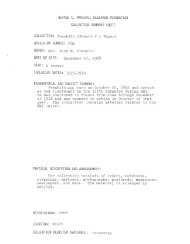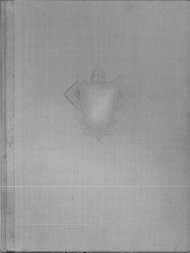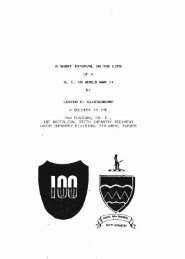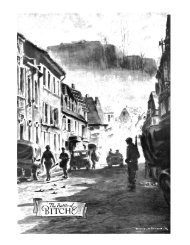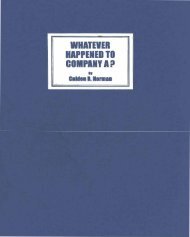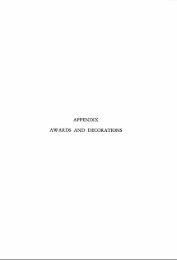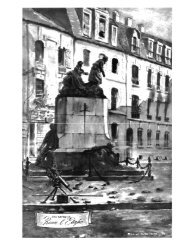Joint Operating Concept (JOC) - GlobalSecurity.org
Joint Operating Concept (JOC) - GlobalSecurity.org
Joint Operating Concept (JOC) - GlobalSecurity.org
You also want an ePaper? Increase the reach of your titles
YUMPU automatically turns print PDFs into web optimized ePapers that Google loves.
Appendix H –Expanding Role of the MILGRP in IW 35<br />
While the following article was written to describe the potential role of the<br />
MILGRP activities to support the GWOT, it provides sufficient illustration of the<br />
vital role that US missions may play in coordinating and executing future IW<br />
operations. As such it is included in this <strong>JOC</strong> as an appendix to guide future<br />
experimentation and CONOPS development.<br />
“As warfare moves into the shadows, it will become a deadly game of cat and<br />
mouse — something more akin to tough investigative and police work than<br />
traditional warfare. In this type of environment, command and control concepts<br />
tailored for the Cold War do not apply. Large joint task forces with multiple<br />
components, designed for divisional fire and movement against similarly<br />
equipped adversary forces are not appropriate for fighting irregular, small-scale<br />
conflicts where surrogate forces carry much of the burden.<br />
For IW fought in the netherworld between real peace and all-out war, one<br />
command and control model has proven to be appropriate, effective and<br />
efficient over time. This is the US ambassador’s interagency country team and<br />
its tailored US military component working as an interagency team nearest the<br />
problem and closest to the principal actors in the host nation. The Defense<br />
Department contribution to the country team is a military <strong>org</strong>anization ranging<br />
from a small Office of Defense Cooperation to a full US Military Group tailored<br />
to meet the ambassador’s needs for military coordination and support. This is<br />
a time-proven design that helps the host nation solve its own problems, designs<br />
information activities to best complement the overarching campaign, and<br />
guarantees cross-cultural understanding and overall success.<br />
US Military Groups, when assisting a country with an active insurgency or as<br />
part of a wider IW effort, are designed to manage the provision of materiel and<br />
training packages, US military advisers and trainers, and intelligence assets<br />
within the context of political constraints. Despite the proven effectiveness of<br />
this formula, the need to fight IW simultaneously in many locations around the<br />
world over an extended time should prompt an overhaul of Military Group<br />
staffing and structure. Of particular importance is commander selection and<br />
preparation, with an eye toward his coordination chain outside an embassy.<br />
Intelligence linkages must also gain greater scope and definition, and make use<br />
of the latest technology. Release authorities and parameters for host nation<br />
partners, as well as the degree of interagency sharing, must also be clearly<br />
defined. Depth among staff members is critical, with emphasis on experience<br />
with counterinsurgency, unconventional warfare, psychological operations,<br />
civil-military operations, security assistance, and logistics. Country-specific<br />
experience is vital as well.<br />
35 Extract taken from a pending article “Group Dynamics -- How U.S. Military Groups support the<br />
War on Terrorism” by MG (Ret.) Geoffrey C. Lambert<br />
Appendix H H-1




